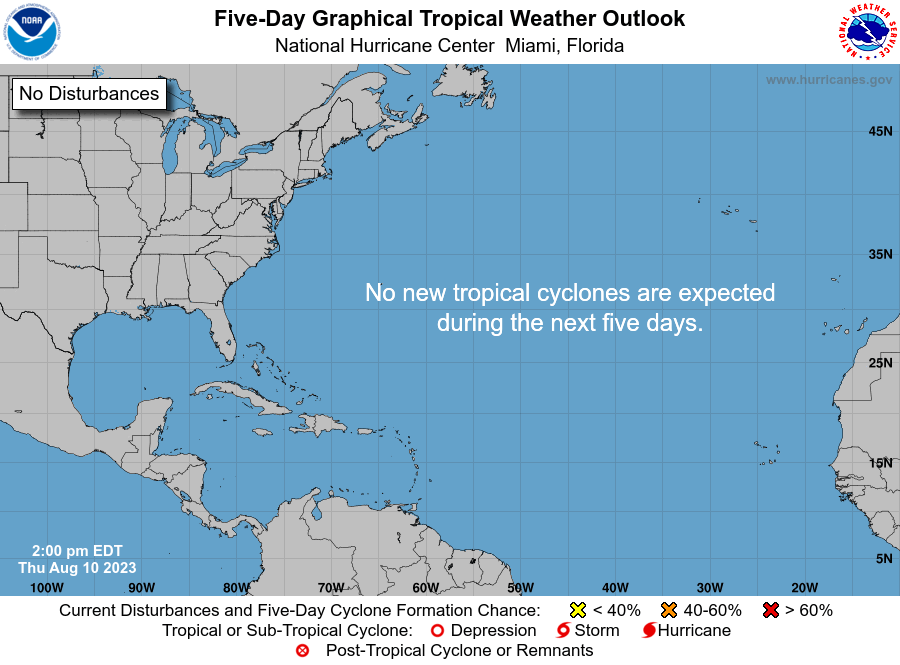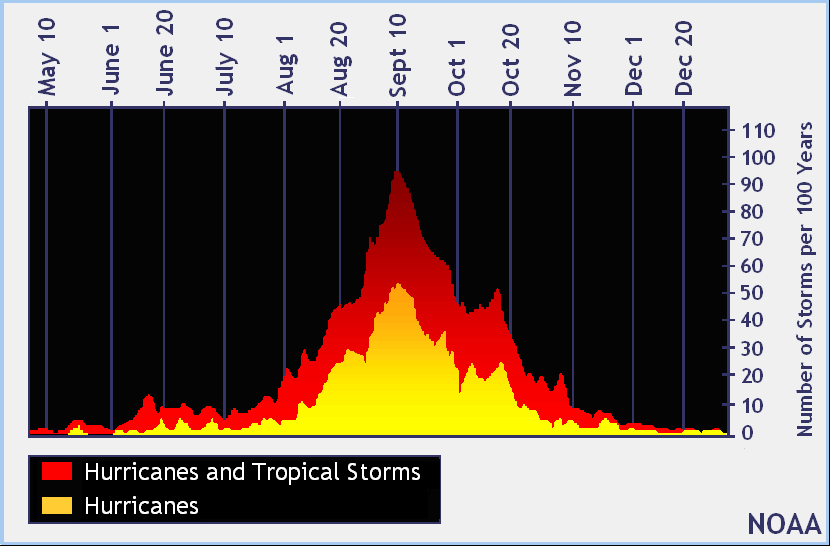Hi all,
As I mentioned, the Atlantic is heating up quite a bit, and there is a storm to watch near Hawaii again! There have been several storms recently, with some ongoing. I'll take them one at a time.
TS Gordon
Gordon made landfall as a 70-mph Tropical Storm near the Mississippi/Alabama border. This area is quite used to tropical systems, and thankfully the storm didn't do much damage (https://www.nytimes.com/2018/09/05/us/gordon-storm-updates.html). Sadly, however, a child was killed by a tree falling on a mobile home. This shows that mobile homes are not safe in any tropical system, no matter the intensity.
Hurricane Florence
Florence is by far the biggest threat in the Atlantic right now. The storm rapidly intensified into a Category 4 storm, but then weakened just as quickly to a tropical storm, due to strong upper-level winds. However, the atmosphere looks very favorable for it to reintensify back into a strong hurricane. The computer models we use to predict the weather are starting to suggest that the storm will stay on a westerly heading, potentially threatening the U.S. East Coast next week.
 Image From www.weathernerds.org
Image From www.weathernerds.org
The most likely scenarios at this point are an impact in the Carolinas or a close brush before moving offshore. However, there are still possibilities on the table ranging from an impact in N Florida to turning out to sea. Everyone from Florida to New England should at least be thinking about your hurricane plan, and potentially get ready to implement it as things become more certain this weekend. Here is the official 5-day track from the National Hurricane Center, the place to go for official hurricane information:
 Image From www.nhc.noaa.gov
Image From www.nhc.noaa.gov
Hurricane Olivia (Pacific)
Hawaii already dealt with a close blow from Hurricane Lane recently, and now Hurricane Olivia may make a close approach and potentially a direct impact.
 Image From www.tropicaltidbits.com
Image From www.tropicaltidbits.com
The storm should be weakening as it approaches Hawaii, but could still be strong enough to cause major problems. Now is a good time to start getting prepared in the Hawaiian Islands.
Wave #1 in the Atlantic
A wave in the Central Atlantic is close to becoming a tropical depression or storm. It could be named Helene or Isaac (depending on if it forms before or after the next wave).
 Image From https://weather.msfc.nasa.gov
Image From https://weather.msfc.nasa.gov
This wave is still too far out to tell much about where it will end up, but it's starting fairly far south and could end up in the Caribbean, which has had a lot of tropical cyclone impacts the last two years (with Matthew in 2016 and Irma and Maria in 2017). Definitely something to watch over the next week.
Wave #2 in the Atlantic
Finally, a very strong wave is moving off of Africa. It may become a depression or storm (again, racing the other wave to get named first!) very soon. It's even further out and may well turn out to sea over the Atlantic, but it's too early to say that for sure. We have even more time to watch this one.
 Image From www.weathernerds.org
Image From www.weathernerds.org
In summary, the Atlantic is very active right now, with Florence a major potential threat to the US, and two other systems behind to watch. Now is a good time to review your hurricane plan, know your evacuation zone if you live near the coast or in a flood-prone area, and be prepared to take action, especially along the US East Coast.
Let me know if you have any questions!
Andy




























